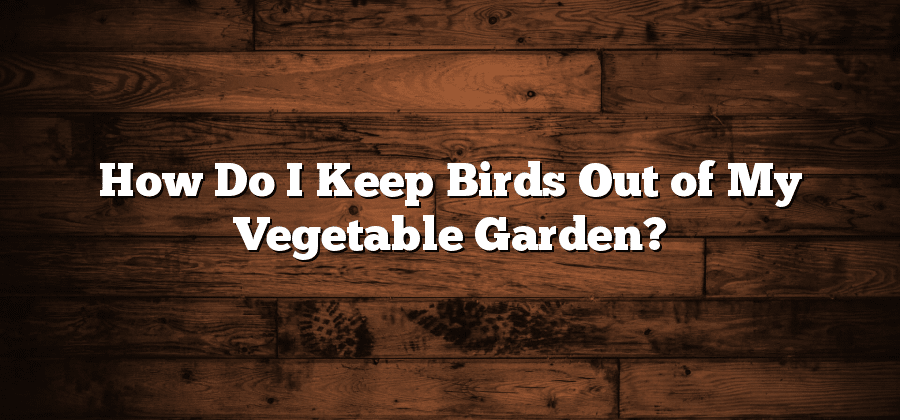Identifying Common Garden Bird Pests
Birds are often a welcome sight in the garden, with their lively chirping and colorful plumage adding a natural charm. However, not all birds are beneficial; some can be quite destructive to vegetable gardens. It is important for gardeners to be able to identify common garden bird pests in order to take appropriate measures to protect their crops.
One common garden bird pest is the European Starling. These birds have a varied diet and are known to feed on a wide range of fruits and vegetables, including tomatoes, berries, and corn. Their large flocks can quickly decimate a garden if left unchecked. Another troublesome bird is the House Sparrow, which often targets leafy greens, peas, and beans. These small but voracious birds can cause significant damage to tender plants, leaving gardeners frustrated and searching for solutions. By being able to identify these common garden bird pests, gardeners can implement strategies to minimize damage and maintain a bountiful harvest.
Understanding the Impact of Birds on Vegetable Gardens
Birds can have a significant impact on vegetable gardens, causing damage to crops and frustrating gardeners. One of the most common issues caused by birds is the pecking and eating of fruits and vegetables. Not only does this result in a loss of produce, but it can also lead to the spread of diseases and the attraction of other pests.
In addition to direct damage, birds can also disturb the soil and uproot young plants while foraging for insects or worms. This can disrupt the growth of vegetables and hinder overall garden productivity. Furthermore, the presence of birds can create stress for gardeners, who may feel helpless and frustrated in their efforts to protect their plants. Understanding the impact of birds on vegetable gardens is crucial for implementing effective strategies to mitigate these problems and ensure a bountiful harvest.
Implementing Physical Barriers to Deter Birds
Birds can be a persistent nuisance in gardens, causing damage to crops and plants. One effective method to deter birds from entering vegetable gardens is by implementing physical barriers. These barriers act as a physical deterrent, preventing birds from accessing the crops and causing harm. There are several types of physical barriers that can be utilized, including bird netting, scare devices, and fencing.
Bird netting is a popular choice for many gardeners as it is a cost-effective and easy-to-install option. The netting acts as a physical barrier that prevents birds from landing on the crops and accessing them. When installing bird netting, it is important to ensure that it is secured tightly to prevent any gaps that birds can squeeze through. Additionally, the netting should be meshed tightly enough so that birds cannot get entangled in it. By choosing and installing bird netting properly, gardeners can effectively protect their crops from bird damage.
Choosing and Installing Bird Netting Properly
Bird netting is a highly effective method for protecting vegetable gardens from relentless bird pests. When choosing and installing bird netting, it is crucial to consider certain factors to ensure its proper functionality. Firstly, it is important to select the right kind of netting material. Opt for a durable and high-quality material that provides optimal protection from birds, while allowing sunlight and water to reach the plants. Mesh size is another crucial element to consider, as it should be small enough to prevent birds from getting through, but large enough to not entangle them. Additionally, ensure that the netting is the correct size for your garden area to provide complete coverage and eliminate any potential access points for birds.
Proper installation is key to ensure the effectiveness of bird netting in protecting your vegetable garden. Start by setting up a support structure to suspend the netting above your plants. This can be achieved by using stakes or posts placed at regular intervals along the perimeter of your garden. Attach the netting securely to the support structure, ensuring it is taut and properly secured at the edges to prevent birds from squeezing through any gaps. Consider installing additional supports in areas where the netting sags to maintain its integrity. Regularly inspect the netting for any damages or signs of wear and tear, and promptly repair or replace any compromised sections to maintain its effectiveness in deterring birds. With careful selection and proper installation, bird netting can be an essential tool in safeguarding your vegetable garden from bird pests.
Utilizing Reflective Materials to Repel Birds
Reflective materials can be an effective way to repel birds from your garden. When birds see shiny or reflective surfaces, they often get disoriented and scared away. One option is to hang strips of aluminum foil or reflective tape from stakes or tree branches near your vegetable garden. As the wind blows, these reflective surfaces will catch the sunlight and create moving reflections that birds find unsettling. Another option is to place metallic objects, such as old CDs or aluminum pie plates, around the garden. The flashing lights and reflective surfaces will deter birds from landing and feeding in your garden.
In addition to aluminum foil and reflective tape, there are also commercially available bird repellent products that use reflective materials. These products are designed to create intense flashes of light that startle and deter birds. They can be placed strategically around the garden, and their reflective properties will effectively repel birds. However, it’s important to carefully read and follow the instructions provided by the manufacturer to ensure the proper installation of these products. With the correct placement and use of reflective materials, you can create a visually unappealing environment for birds, discouraging them from causing damage to your vegetable garden.






